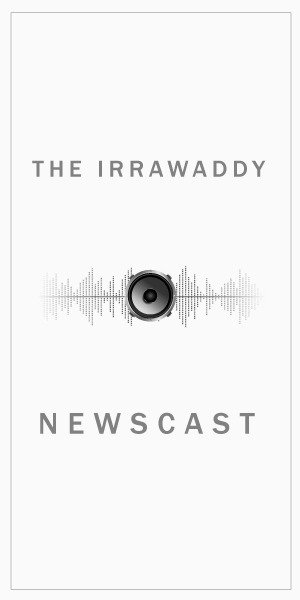There is no material preference at Sirboni Furnishings. As the company’s co-founder Ko Lin Tin Htun Ni puts it, “We use metal, bamboo, wood or rattan, based on design requirements and always considering comfort.”
The products at his showroom—located in a bamboo garden in Yangon’s Insein Township—are a testament to this: wood combined with leather cushions results in a folding stool much different than those available at other furniture stores, and a coffee table made with three distressed planks and a circular glass top showcases his retro, rustic style.
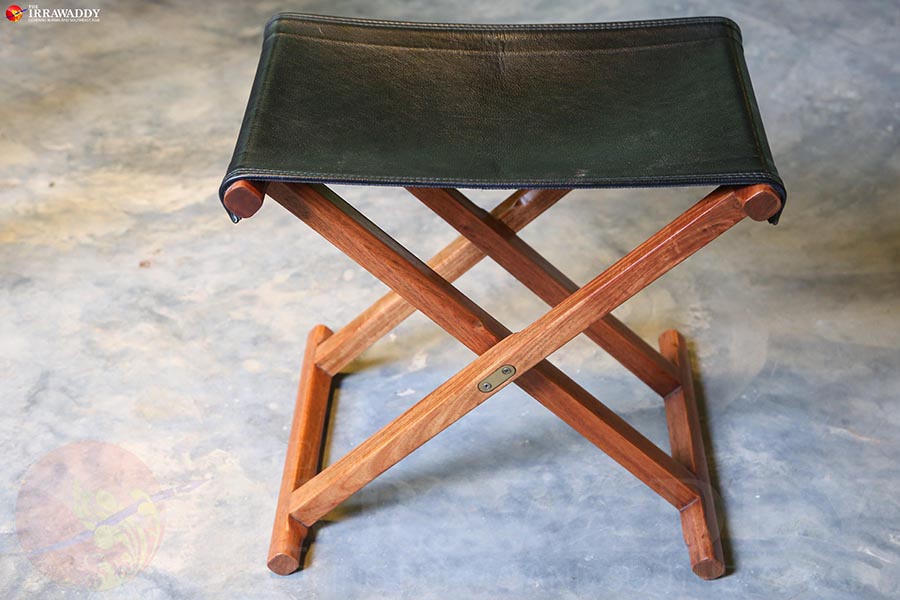
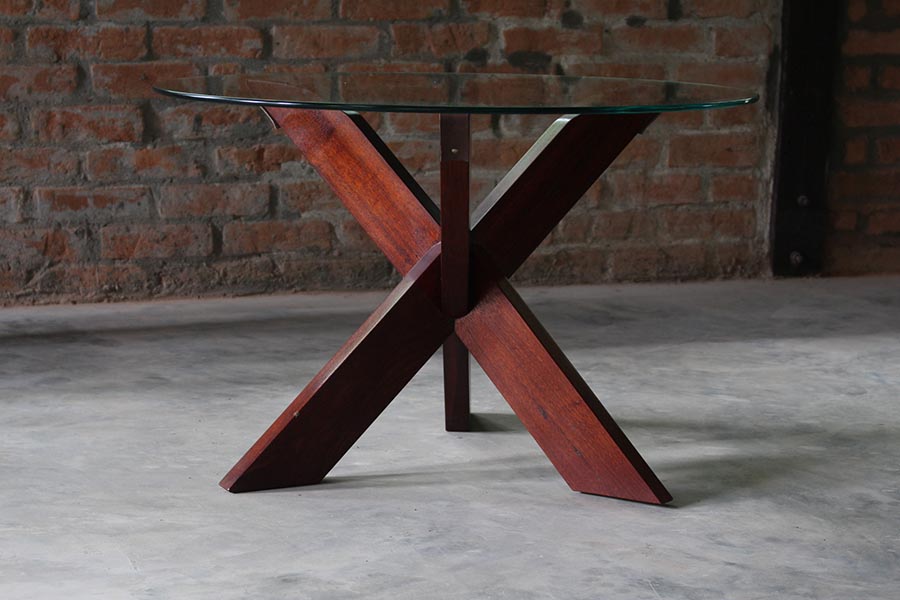
Founded in 1995, Sirboni Furnishings was started by his father as a family-run furniture workshop to satisfy his desire for craftsmanship rather than profit.
In 2012, aiming to boost sales in the local market, the family chose the brand name Sirboni and began designing new pieces. Ko Lin Tin Htun Ni explained the story behind the name: “Our grandfather’s name was U Bo Ni. We added ‘Sir’ in front to honor the foundation he laid for the family.”
Earlier this month, The Irrawaddy talked to Sirboni’s co-founder and his 25-year-old son Ko Lin Tin Htun Ni—who returned from the United States last year with the mission of making his family firm a nationwide retailer—and discussed inspiration, manufacturing, struggles and favorite designs.
How did you become a furniture designer?
I graduated with a mechanical engineering degree from the Florida Institute of Technology in the United States. I have been asked frequently how mechanical engineering relates to making furniture. Making furniture is a form of construction. Building safe and sturdy pieces from wood, bamboo or metal—and understanding the nature of the material—is the most important aspect of designing furniture. It’s also how we ensure customer safety. I studied design and furnishings by myself, and the rest I learned in university.
What are your inspirations?
I look for inspiration all over, whether in fashion, graphic design or painting. I have teachers everywhere.
What makes Sirboni different from other furniture manufacturers?
Sirboni is different in how we focus on design, sustainability and materials. So as not to conceal the true nature of wood or bamboo, we coat the pieces as little as possible. People know the material when they see it, no disguises. We use honest designs and traditional construction methods.
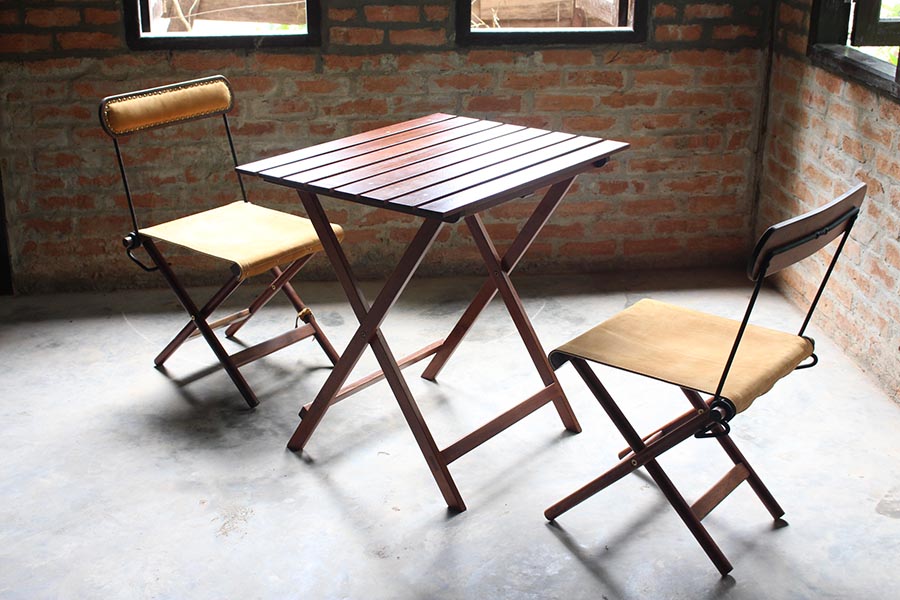
What are Sirboni’s characteristic designs?
In terms of design and aesthetics, we are a little bit rustic and vintage but also keep need and exquisiteness of craft in mind. Our designs are sustainable. We try to give users a unique experience and furniture that seamlessly integrates into their homes in a positive way.
How is your work sustainable?
Sustainability starts with durability. We are all busy and when something breaks, it’s time-consuming and difficult to repair. Sustainability starts with thinking about how to build durable pieces.
It’s also about material choice and maximizing each material’s durability. Also, sourcing materials. Wood must be legally extracted; bamboo comes from plantations. Unsustainable practices will appear in businesses at times, but it’s important to reduce these as much as possible. There is massive deforestation in Myanmar and sustainability is crucial.
How is local demand?
Local demand is slow but growing. There are no major difficulties. We also have foreign demand but we want to focus on the local market. We believe there is room for growth with well-designed furniture.
How do you balance design and profit?
Product development requires time and money. If we want to make a new design, we could come up with a safe design that would sell well. But we need to balance customer tastes with our vision. We try to innovate while balancing the two.
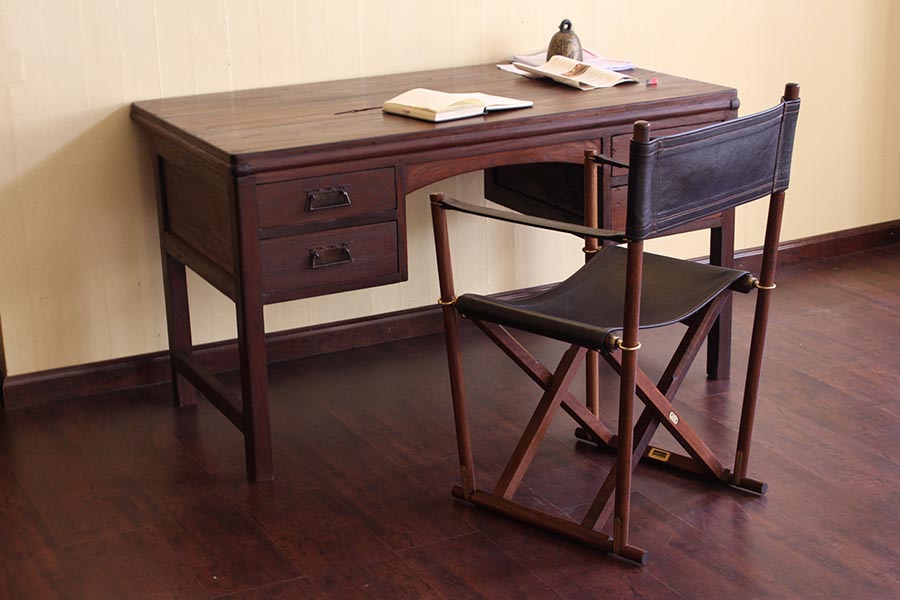
How do you choose your materials? Are there preferences?
We don’t have specific material preferences because we are a design-oriented company. We use metal, bamboo, wood or rattan based on design requirements.
How do you plan to expand in the local market?
We are going to focus on branding. Branding and marketing are weak in our industry. I can’t speak for whole industry but as far as I know, there is so little creativity in marketing. Businesses can’t get consumers to care about their products.
Consumption here is based on utility and price. If consumers think something is useful to them, they check the price. If the price is cheap, they buy the product. People rarely buy products based on emotions. We want to start a trend with products that may not be the cheapest but that customers truly like. To do this, we are marketing our brand through social media storytelling. We hope our brand expands by sharing what we represent, what we want to be and what we contribute to.
What is the struggle for these value-added products in Myanmar?
Mainly, we struggle with the manufacturing process and with lack of government support. Consumption is increasing and foreign brands are entering the market. But money from foreign companies doesn’t circulate within the country. Production needs to outpace consumption. But manufacturers are facing a shortage of skilled laborers. Also, electricity. Infrastructure is essential to manufacturing products at lower costs. Next, craftsmanship. It is easy for craftsmanship to disappear in developed countries. The private sector alone cannot preserve it; it needs the support of the government.
What is the most important element in a piece of furniture?
Every element is vital. But, among these vital elements, comfort is fundamental. Furniture is made for people, and if it isn’t comfortable, then we are wasting materials. Also, durability. Those are the two most important things in my opinion.
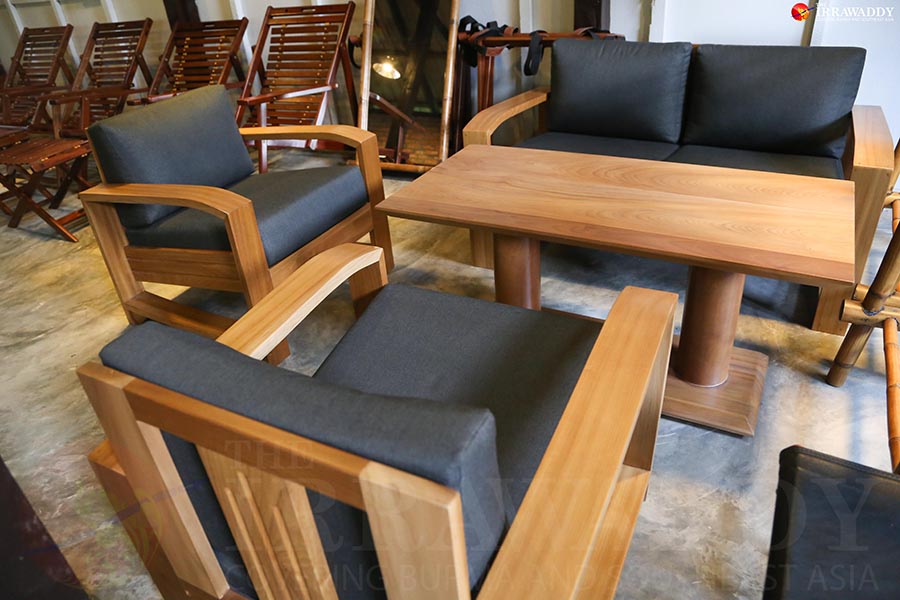
What does making furniture mean to you?
There are two aspects to furniture; design and construction. Design is artistic work while construction is technical. It’s about balancing the two.
Which piece of work is your favorite among your designs?
The library chair. During my stay in the US, there was a chair at a library that I always used. With that in mind, I improved on the design and called that design “Library Chair.” I really like that chair.

When did you create it?
Last year, in 2016.
What piece of furniture can you not live without? And why?
A chair. While I was in the United States as a college student, I had to move a lot over the years. Whenever I moved into a new place, I didn’t have anything to sit on. It would drive me crazy. People use chairs often, and it is critical that they are comfortable. For me, it is the most important piece of furniture.















